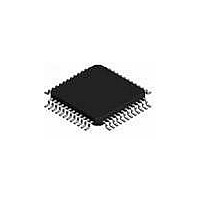L6711TR STMicroelectronics, L6711TR Datasheet - Page 39

L6711TR
Manufacturer Part Number
L6711TR
Description
IC CTRLR 3PHASE VID/DACS 48-TQFP
Manufacturer
STMicroelectronics
Type
Step-Down (Buck)r
Datasheet
1.L6711TR.pdf
(50 pages)
Specifications of L6711TR
Internal Switch(s)
No
Synchronous Rectifier
No
Number Of Outputs
1
Voltage - Output
0.8 ~ 1.55 V
Current - Output
2A
Frequency - Switching
150kHz
Voltage - Input
12V
Operating Temperature
0°C ~ 70°C
Mounting Type
Surface Mount
Package / Case
48-TQFP Exposed Pad, 48-eTQFP, 48-HTQFP, 48-VQFP
Power - Output
2.5W
Output Voltage
0.8 V to 1.581 V
Output Current
95 A
Input Voltage
13.8 V
Mounting Style
SMD/SMT
Maximum Operating Temperature
+ 125 C
Minimum Operating Temperature
0 C
Lead Free Status / RoHS Status
Lead free / RoHS Compliant
Other names
497-5363-2
L6711TR
L6711TR
Available stocks
Company
Part Number
Manufacturer
Quantity
Price
L6711
16
16.1
Driver section
The integrated high-current drivers allow using different types of power MOS (also multiple
MOS to reduce the equivalent R
The drivers for the high-side mosfets use BOOTx pins for supply and PHASEx pins for
return. The drivers for the low-side mosfets use VCCDRx pin for supply and PGNDx pin for
return. A minimum voltage of 4.6V at VCCDRx pin is required to start operations of the
device. VCCDRx pins must be connected together.
The controller embodies a sophisticated anti-shoot-through system to minimize low side
body diode conduction time maintaining good efficiency saving the use of Schottky diodes:
when the high-side mosfet turns off, the voltage on its source begins to fall; when the
voltage reaches 2V, the low-side mosfet gate drive is suddenly applied. When the low-side
mosfet turns off, the voltage at LGATEx pin is sensed. When it drops below 1V, the high-side
mosfet gate drive is suddenly applied.
If the current flowing in the inductor is negative, the source of high-side mosfet will never
drop. To allow the turning on of the low-side mosfet even in this case, a watchdog controller
is enabled: if the source of the high-side mosfet doesn't drop for more than 240ns, the low
side mosfet is switched on so allowing the negative current of the inductor to recirculate.
This mechanism allows the system to regulate even if the current is negative.
The BOOTx and VCCDRx pins are separated from IC's power supply (VCC pin) as well as
signal ground (SGND pin) and power ground (PGNDx pin) in order to maximize the
switching noise immunity. The separated supply for the different drivers gives high flexibility
in mosfet choice, allowing the use of logic-level mosfet. Several combination of supply can
be chosen to optimize performance and efficiency of the application.
Power conversion input is also flexible; 5V, 12V bus or any bus that allows the conversion
(See maximum duty cycle limitations) can be chosen freely.
Power dissipation
Two main terms contribute in the device power dissipation: bias power and drivers' power.
The first one depends on the static consumption of the device through the supply pins and it
is simply quantifiable as follow:
P
Drivers' power is the power needed by the driver to continuously switch on and off the
external mosfets; it is a function of the switching frequency and total gate charge of the
selected mosfets. It can be quantified considering that the total power P
switch the mosfets (easy calculable) is dissipated by three main factors: external gate
resistance (when present), intrinsic mosfet resistance and intrinsic driver resistance. This
last term is the important one to be determined to calculate the device power dissipation.
The total power dissipated to switch the mosfets results:
P
External gate resistors helps the device to dissipate the switching power since the same
power P
resulting in a general cooling of the device.It is important to determine the device dissipated
power in order to avoid the junction working beyond its maximum operative temperature.
DC
SW
= V
= 3 · (Q
CC
SW
· (I
will be shared between the internal driver impedance and the external resistor
G_HS
CC
+ 3 · I
· V
BOOT
CCDRx
+ Q
+ 3 · I
G_LS
dsON
BOOTx
· V
), maintaining fast switching transition.
CCDR
)
) · F
SW
SW
dissipated to
Driver section
39/50














